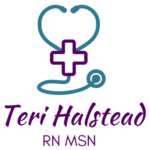In the news...

Did you now that November is National Family Caregivers Month? This year President Biden addressed the 44 million caregivers in America with this statement: “Every day, millions of Americans provide essential care and medical assistance to their loved ones. These acts of love, commitment, and compassion enable their family members to receive the support they need to live a life with dignity. This has been especially true throughout the COVID-19 pandemic, during which Americans of all ages have made substantial sacrifices to keep family members safe and healthy. During National Family Caregivers Month, we recognize the important role of our Nation’s family caregivers and thank them for the invaluable and instrumental care they provide.”
Recognize yourself this month, along with those millions of others, by being mindful of all that you do to bring comfort, care, and contentment to your loved one with dementia.
Care tip:
Have you struggled to get your loved one to shower or bathe? There are a thousand reasons why a person with dementia will refuse to bathe.
- They may be afraid of falling – get a shower bench for them to sit on.
- The water from the shower head hurts their skin – turn the shower head to point toward their feet.
- They’re too cold – preheat the room by running hot water for a few minutes before they get there. Have everything ready and close to hand. Place a towel on the seat so they don’t feel plastic against their skin. This also can prevent a skin tear if their skin is fragile and they “stick” to the seat.
- They don’t know what to do – allow them to participate as much as possible. Hand them the washcloth and give simple, one step directions for them to follow.
- They insist they showered yesterday – it’s okay to use bribery, misdirection, or falsehoods at this time. After the shower you’ll get them their favorite treat. Tell them have a doctor’s appointment or the doctor ordered a “special shower” twice a week. Some caregivers have resorted to telling their loved one that they “stink” and need to get cleaned up before doing something such as a meal or an outing.
Bathing is the most cause of conflict between caregiver and loved one. Take the time to discover the reasons why they refuse and then create a work around. It takes diligence and imagination, but I know you can do it.
Tools you can use

Bed Alarm System. Many elderly people are unsteady on their feet, especially as they attempt to get upright and start walking. As caregivers we are very conscious of the danger of falls and the complications that can happen because of them. A bed alarm system can keep you alert to any movement that may become a problem. The pad can be placed under the bed sheet so when the person gets up an audible alarm will sound. It can also be placed in a chair if you’re worried about them getting up when you’re not in the room. Some systems have a clip you attach to the clothing, but this can be an issue with the string getting tangled and yanked off. When I asked the caregivers in our fb group, everyone highly recommended getting this system. It was considered essential if your person with dementia gets up during the night or even if they try to wander.
Pros: Accurate sensing of movement. Increased ease of mind, especially during the overnight hours. Improved safety.
Cons: Can be pricey – shop around. Some systems have the alarm situated in the room with the device. The sudden noise can be aggravating. Be sure to get one with the alarm set up in another room or on your mobile device.
Interesting research
Researchers at the University of South Florida Health have discovered that a chemical compound called “Fenchol” which is found in some plants (including our favorite herb – basil) can help to reduce the inflammation associated with Alzheimer’s disease. Let’s try to break this down…
It starts in your gut with some fatty acids produced by your good bacteria that provide nutrition to your intestines. Let’s call them FA1s – not a real scientific designation btw 😊. However, these fatty acids also have an affect on your brain health. As FA1s travel through the blood to the brain, they can bind to and activate more fatty acids (FA2s) that are found on nerve cells (neurons.) Initial studies indicate that persons with Alzheimer’s and dementia have fewer of these fatty acids. This is where it gets interesting.
The neurons are where amyloid-beta plaques can build up blocking the signals between nerve cells which eventually leads to cell death (resulting in dementia.) When activated, the FA2s essentially “insulate” the neurons from the plaque build up while also helping to remove the existing plaques from the system faster. FA2s are also shown to destroy “zombie cells.”
What in the world is a “zombie cell?” you ask. Zombie cells (what an interesting visual this presents) are neurons that stop replicating and are in the process of dying. This causes inflammation in the brain. This toxic environment can create a system shut down by sending “death signals” to otherwise healthy cells, thus creating more zombie cells. And the downward spiral continues. Insert those FA2s and the zombies are annihilated! Halting the progress of the disease.
Before you overdose on basil, please keep in mind that this two part process is currently under much more rigorous study. But the saying “You are what you eat” comes to mind. For more complete info you can check the link in the references section.
References
National Family Caregivers Month (Nov 5, 2021) Retrieved November 10, 2021, from https://seniorcareinc.org/national-family-caregivers-month-2021/#:~:text=Nov%205%2C%202021%20November%20is%20National%20Family%20Caregiver,care%20and%20medical%20assistance%20to%20their%20loved%20ones.
University of South Florida (USF Health). (2021, October 5). Natural compound in basil may protect against Alzheimer’s disease pathology. ScienceDaily. Retrieved November 4, 2021, from www.sciencedaily.com/releases/2021/10/211005101827.htm

